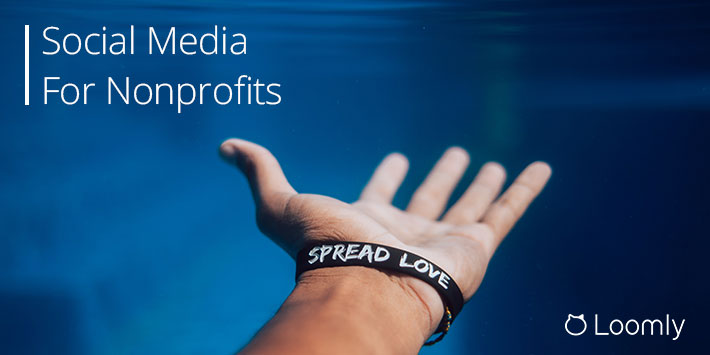Social Media for Nonprofits: How to Build a Successful Brand for Your Organization
As a nonprofit organization, social media can seem daunting and challenging.
Most nonprofit organizations operate with limited resources, low budgets, and small teams of volunteers. In such scenarios, having a dedicated social media team is often difficult.
However, it doesn’t have to be this way.
When approached with the right strategy, social media can unlock a territory full of new opportunities for you. To make up for the lack of resources and knowledge, platforms like Facebook, Instagram, and YouTube provide nonprofits with resources, tools, and features tailored to their needs.
If you want to build a tight-knit community of donors and volunteers, increase your brand awareness, create successful campaigns, then read on. In this guide, you’ll discover:
- The benefits of social media for nonprofits
- Three examples of successful nonprofit brands on social media
- The best social media practices for your nonprofit organization
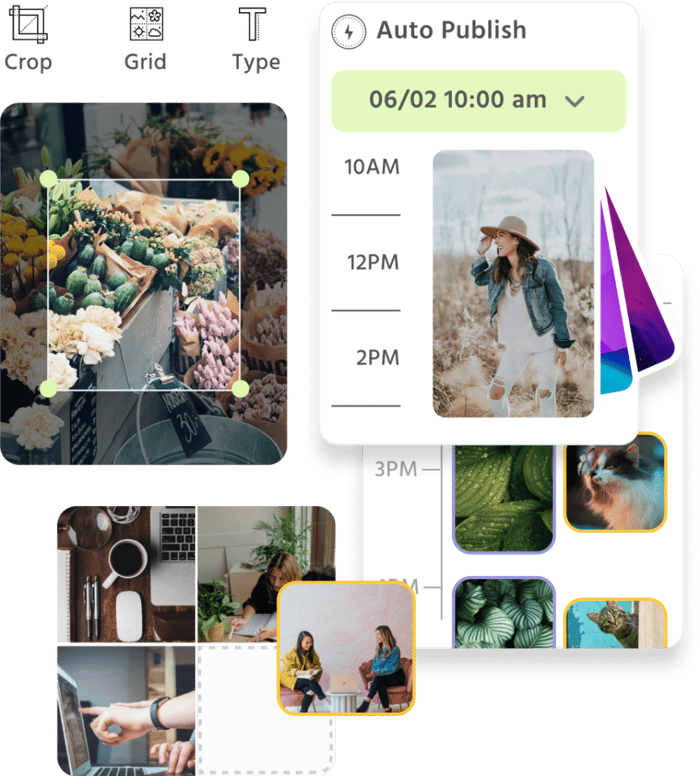
Manage all your social media accounts in one place.
Craft, schedule, & auto-post content to all your social channels, then track analytics and manage interactions from a single, easy-to-use dashboard.
The Benefits of Social Media for Nonprofits
The Global Trends in Giving Report revealed that social media inspired more people to donate (29%) than other channels. Furthermore, Facebook encouraged them the most (56%), followed by Instagram (20%) and Twitter (13%).
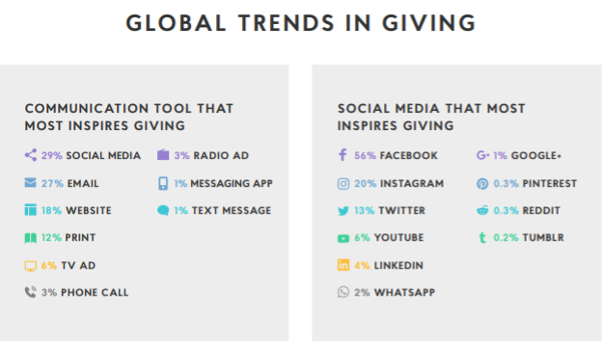
That makes social media highly beneficial to nonprofits. Let’s take a look at the major benefits of social media for nonprofits:
1. Build trust with your audience
Post-pandemic, trust in institutions is at an all-time low. Storytelling and showcasing the impact of your work can help you regain the audience’s confidence.
Once you lay the foundation, achieving other organizational goals like fundraising becomes easier. Research shows that 55% of people engaging with nonprofits on social media take action, and 59% of them donate money.
2. Increase awareness
As a nonprofit, your mission is of great importance to your followers. And you can use social media to help convey your message and educate people. Plus, you can connect with people in need, promote your initiatives and campaigns through social media.
Here’s how 15 Percent Pledge fulfilled its mission of getting brands to pledge 15% of their shelf space to Black-owned businesses.
They made a post publicly calling out Nordstrom for the lack of Black-owned brands on their shelf.
After one year of the post, Nordstrom signed a 10-year contract with the organization.
3. Build a community
With the help of the right hashtags and content creation, you can connect with people who believe in your cause and thus, build a strong community of donors, volunteers, mentors, and advocates.
You can create groups where people can stay connected and have discussions. Such engaged communities will help your nonprofit grow beyond just likes and followers.
4. Scale fundraising
Fundraising is an integral part of nonprofits. And social media can help in scaling your fundraising campaigns. What might have reached 100 people in traditional fundraising can reach 100,000 people through social media.
With social media fundraising tools, it becomes more straightforward and efficient for donors to donate and for organizations to run the campaigns.
5. Recruit Volunteers
Volunteers are the backbone of any nonprofit. Primarily operating on a limited budget, having a network of volunteers can help nonprofits expand.
When in need, you can reach out to your network to volunteer. That works well, mainly because of the ability to connect with volunteers having the same vision as your organization.
Examples of Successful Nonprofits on Social Media
Social media has helped several organizations to raise millions of dollars for different causes. Let’s take a look at three successful nonprofits:
1. NHS Charities Together
During the pandemic, NHS Charities Together ran “Run 5, Donate 5, Nominate 5.” The campaign took place on Instagram, where people were encouraged to donate £5 after running 5 kilometers (3.107 mi) and nominate five people for the same.
The campaign saw participants like Ellie Goulding and John Terry. The campaign raised more than £2 million after meeting the initial goal of £5,000 in four days.
2. 15 Percent Pledge
15 Percent Pledge is an organization working on getting “brands to pledge 15% of their shelf space to Black-owned businesses.” With consistent posting on Instagram and using appealing visuals, live videos, and other features, they have been able to get over 79,000 followers in one year. Plus, other brands like Yelp, Sephora, Vogue, and Nordstrom have taken the 15 Percent Pledge.
They have an engaged community with their posts receiving over 4,000 likes, which shows how a well-executed social media strategy can work for nonprofits.
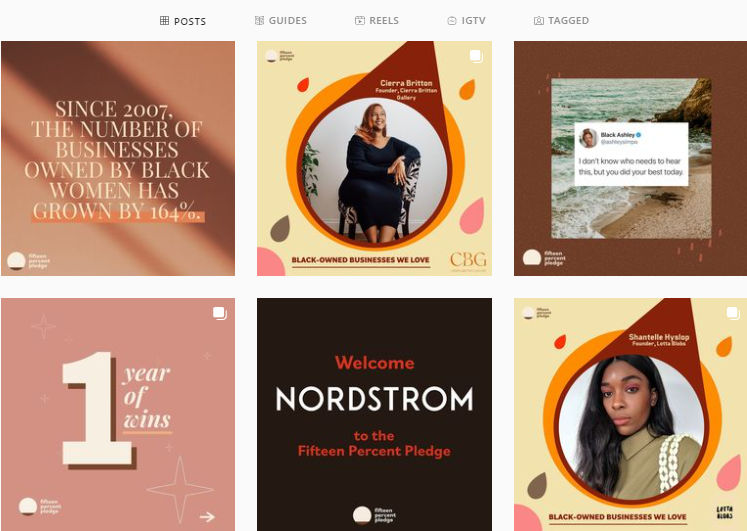
Source: 15percentpledge
3. Make-A-Wish
Make-A-Wish is a nonprofit organization that makes the wishes of children with critical illness come true. From fulfilling kids’ wishes of having a camera and a playset to taking them skydiving, Make-A-Wish finds a way to fulfill every desire.
They make use of storytelling by sharing how the fulfilled wishes of the kids made a change in their lives, which establishes an emotional connection with the audience. The activated “Donate” button on Facebook and Instagram makes it easy for their followers to donate.
Make-A-Wish has garnered over 45 million views on YouTube and 324,000 followers on Instagram.
7 Best Practices for Nonprofits on Social Media
Social media can be challenging to navigate even with online resources from Facebook, Instagram, and YouTube. Moreover, nonprofits require a specific social media approach because of their different organizational goals.
Follow these seven best practices to build your brand on social media:
- Define success and know your audience
- Create value-driven and impactful content
- Add “Donation” buttons
- Set up guidelines and policies
- Prepare a content calendar
- Go live
- Interact with your audience
1. Define success and know your audience
Clearly define the goals you’re trying to achieve on social media. Your goal might not always be fundraising – you can use social media for:
- Raising awareness
- Increasing advocacy
- Getting more people in your support group
- Promoting events and campaigns
Knowing your goals give you a direction and makes it easier to create a strategy.
After setting your goals, define the type of audience you’re trying to reach. People demand a certain degree of personalization and an understanding of what they want. Moreover, you’ll be able to cater to your audience more effectively if you know whom you’re talking to.
2. Create value-driven and impactful content
One of the reasons people get associated with nonprofit organizations is that they connect with the subject and the cause. Use your story and your work to showcase the impact the donations make. The key is to create content that inspires your donors to take more action.
To do that, think about your audience when you are putting out social media posts. You can ask questions like:
- What type of content will get them excited?
- What kind of content will make them feel good?
- What do they value?
- What do they want to know more about your work?
3. Add “Donation” buttons
In 2019, Instagram introduced the “Donate” button, which lets you add a sticker on Instagram Stories to make donations easier. Facebook already has a “Donate” button and many more fundraising options, such as live donations and page fundraisers.
18% of worldwide donors have donated through Facebook fundraising tools, and 88% of them say they’ll use it again. Features like the “Donate” button eliminate the limitations of traditional fundraising. People can donate irrespective of their location, making it easier to support a cause.
Follow these simple steps to add the ‘Donate’ feature to your profile:
- Go to your business profile and open the menu.
- Tap Settings.
- Select Business.
- Tap Donations.
- Turn on the “Add donate button to profile.”
To enable donations on Instagram Stories, follow these steps:
- Go to your Facebook page settings.
- Select Donations.
- Turn on the “Allow people to add donation stickers on Instagram Stories“.
- Save it.
4. Set up guidelines and policies
Your organization might have many volunteers and employees handling your social media accounts. But without specific social media guidelines and policies in place, it’s difficult to achieve a consistent message.
These best practices will help you maintain your brand identity and consistency across different platforms, irrespective of the account manager. Remember to include a style guide for visuals and written content, as well as a PR crisis plan.
5. Prepare a content calendar
A social media calendar will help you stay consistent with your posts without getting overwhelmed at the last minute. It’s even more critical for your nonprofit organization as you can plan for social media holidays.
Identify the social media holidays that you can associate with your cause and plan for those. For example, if you want to raise awareness around sustainability and the environment, you can celebrate holidays like #EarthDay to reach a wider audience. Such well-crafted posts can boost organic reach and increase donations.
Happy #WorldSeaTurtleDay!

Around 8 million pieces of plastic makes its way into our oceans every day. About 52% of Sea Turtles have consumed plastics.
Sign up for a cleanup in your community today!https://t.co/Jc9iYOAxVv pic.twitter.com/3EYYiNfc4Z
— EARTHDAY.ORG (@EarthDay) June 16, 2021
Loomly Tip: You can view every social media holiday of a month at a glance on Loomly. Hence, you can save time updating holidays manually, or worse – missing out on them completely.
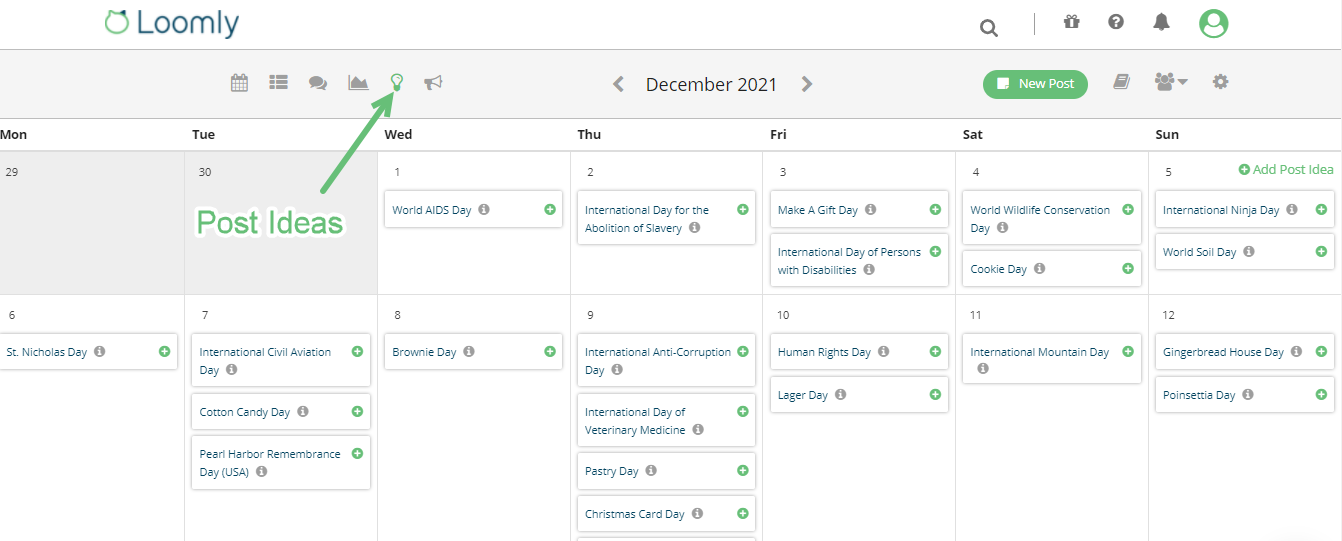
6. Go live
Facebook Live receives more engagement, producing up to 6 times more interactions when compared to traditional videos.
Instead of only hosting fundraisers, you can create an event schedule where you host Facebook or Instagram Live or redirect your audience to a webinar. Hosting such events helps you connect with your community and educate people.
In 2020, Instagram came out with another feature called live donations, which gave donors the ability to donate on a live stream.
7. Interact with your audience
Your social media success is heavily dependent on the engagement you generate. See this as a way of building and nurturing your community.
Invite dialogues by asking questions, responding to comments, and answering your followers’ queries. At the Case Foundation, posts ending with a question mark generated twice as much engagement.
Social Media for Nonprofits, in a Nutshell
Although social media for nonprofits can appear challenging, organizations have to embrace the channel if they want to succeed.
By using the right social media tools and strategies, nonprofits can overcome their limited resources (team, budget, and knowledge) to build an enthusiastic community of inspired people. Social media can help your nonprofit fulfill its mission and reach people at scale.
Follow these seven best practices to boost your nonprofit organization on social media:
- Define success and know your audience
- Create value-driven and impactful content
- Add “Donation” buttons
- Set up guidelines and policies
- Prepare a content calendar
- Go live
- Interact with your audience
